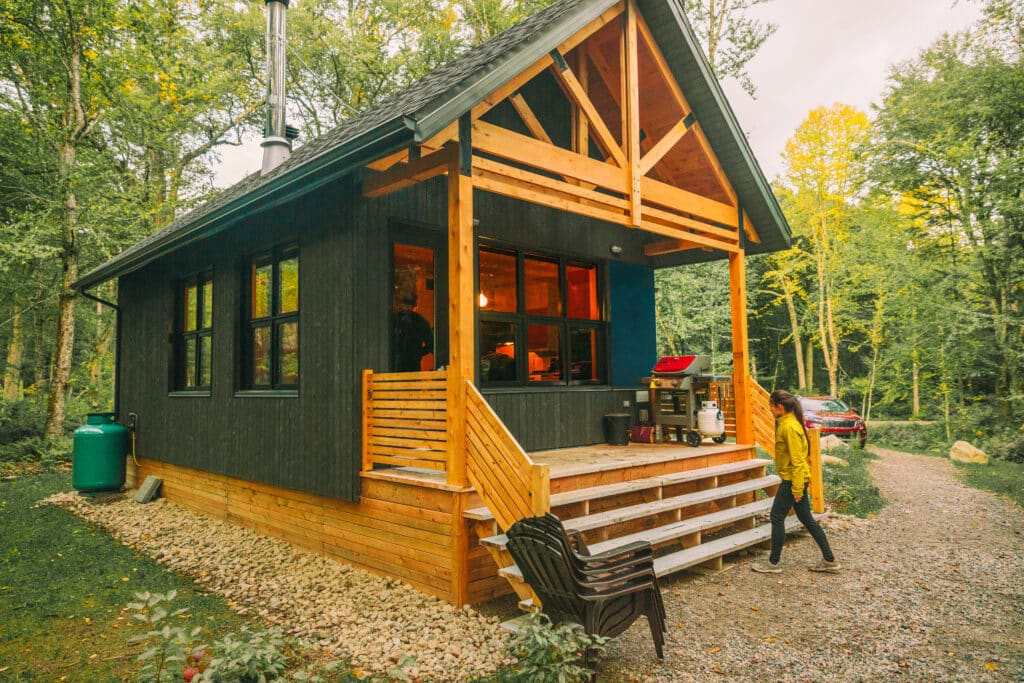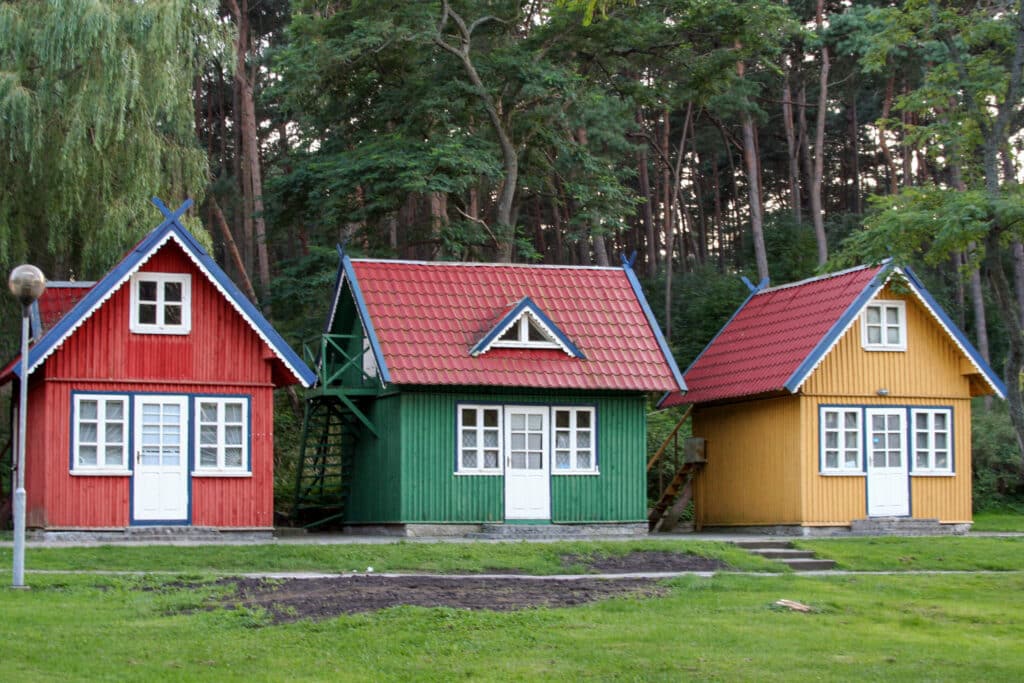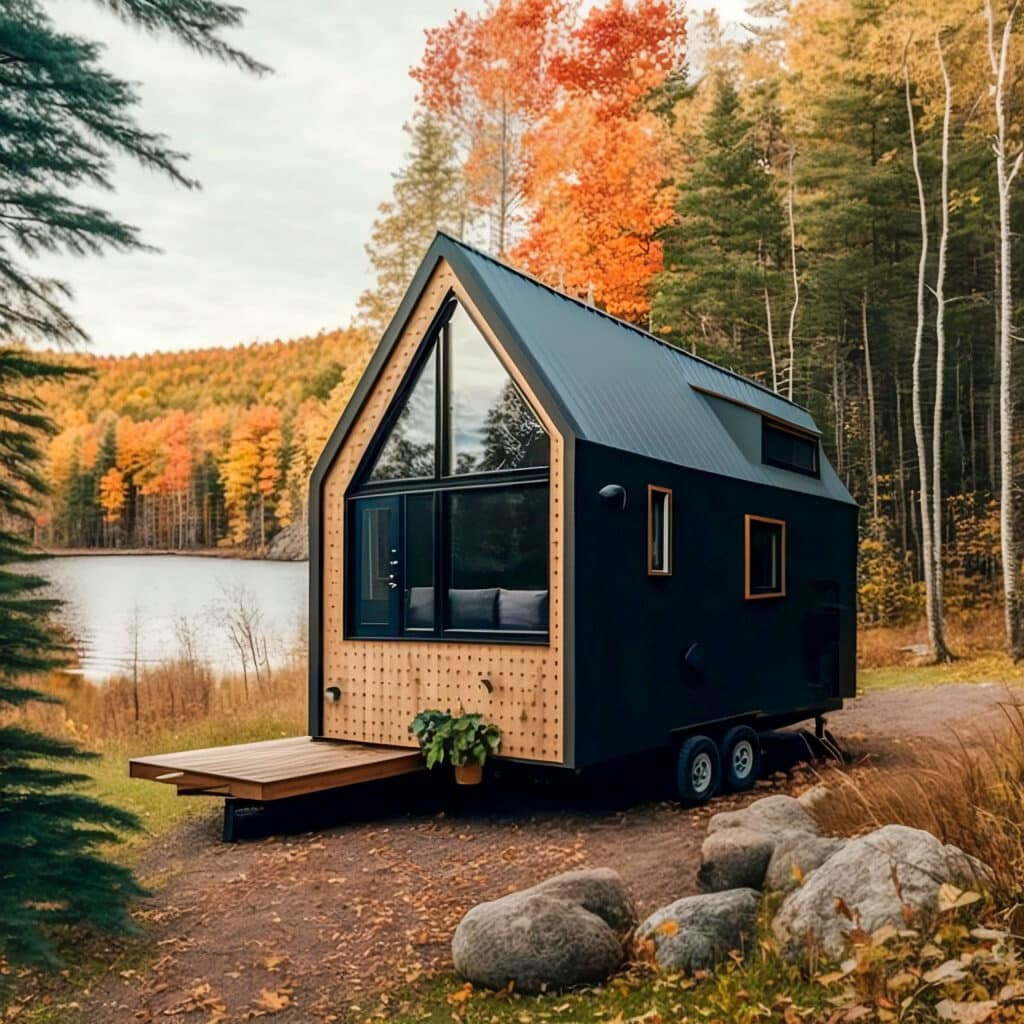>
SUMMARY: We think Tiny House Villages (or good quality cabins – pictured) need to be a priority for policy-makers and developers…
We are planning additional discussion with our associated rationale on this topic.
We are just doing a quick flyby reconnaissance flight over the topic in this article.

>
The problem is the math.
We need to roll out something like 96,000 new affordable homes a day on a global level.
That’s a lot on my trusty 42 calculator (PCalc): 35 million units a year. Don’t need to go exponential but that’s a lot of housing units.
Rrrright.
That means a lot of construction workers, land usage rights granted, materials, etc., etc. Throw in some retiring construction boomer-workers for good measure and younger generations thinking of checking out the Big Bang Theory, becoming theoretical physicists, or letting AI fix their woes. The math ain’t working on our piece of paper we scrounged from the barista while sipping an espresso.
Life gets interesting when we try to balance supply-demand curves across countries (hint: where do you put temporary construction workers while houses are being built?). Supply line dependencies are always good for some additional grey hairs.
We won’t even bother discussing political chaos and tantrums (by pseudo-adults in the room) impacting timely and prudent decision-making. That just throws our abacus and roulette wheel statistics into a hissy fit.
Seriously? How much hassle do you really want from upset citizens while the math-monster yawns, gets out of bed, puts the coffee on, and things really get perking?
Let’s talk about a global snapshot, home turf for the writers (Canada) and a few other countries.
>>
The World Economic Forum nails it with a useful summary of the current state of affairs. The headlines aren’t appetizing: 1.6 billion people impacted by 2025. UN-Habitat pegs the need in the order of 3 billion people by 2030.
Feel free to read all about it—links follow.
Basically, we’re in a mess. The WEF is working on it (as are many countries) and other organization such as UN-Habitat.
But the problem is in the global math and economics. That’s a more involved set of articles (for another day). Links:
>>
Canada has a significant shortfall. We are running a 3.5 million housing unit shortage by 2030 (that’s on top of current construction).
>>
The UK is short about 4 million housing units:
The USA is about 6 million (with arguments for a lower number ). Other articles indicate other numbers (the problem of counting housing unit shortage is not only a problem in the USA).
Homelessness samples by country can be found here .
>

For one, they are relatively cheap and fast to build. Often, they can be manufactured offsite (think regular modular homes on a shrink-diet). They can exist with or without formal foundations (and so modular or manufactured homes). You don’t need a military transport plane to drop these onsite. Save your budget dollars on C5 Galaxies and Skyhook Cranes (heavy-lift helicopters) when a 4×4 and trailer can do the job.
If you would like to look into some nuisance obstructions to these, help yourself at (you guessed it) … Obstructions. The wiles of the NIMBY-Saurus and Zone Trolls are discussed in this article.
We seek to minimize major neighborhood uproars from a lack of man caves (or she sheds) by having more shared and common areas. The benefits of economies of scale are substantial.
Did we mention higher percentages (on an area pro rata basis) of shared and common areas and resources? We know that people need their own space and digs to avoid climbing the walls with cabin fever.
But if life means sleeping in your car or under a piece of cardboard, a tiny house feels pretty good. Perspective changes the view.

A Site dedicated to:
All things Community …
… that should be …
… that can be …
…. that will be …
Reimagine-d and Rethink-ed
Please support our dedicated workers with our
Publications or Products
| Cookie | Duration | Description |
|---|---|---|
| cookielawinfo-checkbox-analytics | 11 months | This cookie is set by GDPR Cookie Consent plugin. The cookie is used to store the user consent for the cookies in the category "Analytics". |
| cookielawinfo-checkbox-functional | 11 months | The cookie is set by GDPR cookie consent to record the user consent for the cookies in the category "Functional". |
| cookielawinfo-checkbox-necessary | 11 months | This cookie is set by GDPR Cookie Consent plugin. The cookies is used to store the user consent for the cookies in the category "Necessary". |
| cookielawinfo-checkbox-others | 11 months | This cookie is set by GDPR Cookie Consent plugin. The cookie is used to store the user consent for the cookies in the category "Other. |
| cookielawinfo-checkbox-performance | 11 months | This cookie is set by GDPR Cookie Consent plugin. The cookie is used to store the user consent for the cookies in the category "Performance". |
| viewed_cookie_policy | 11 months | The cookie is set by the GDPR Cookie Consent plugin and is used to store whether or not user has consented to the use of cookies. It does not store any personal data. |